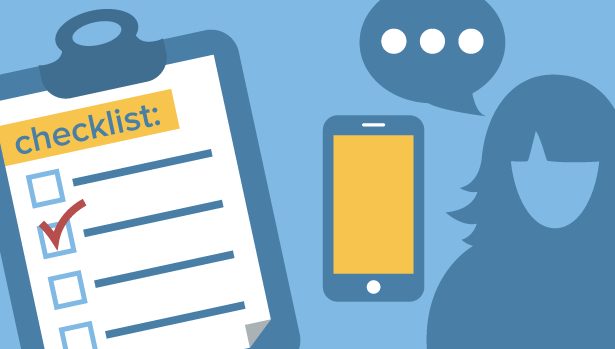Checklist is an important part of any software testing activity. Mobile testing is no different. To help you in your mobile testing activities, we have come up with a mobile testing checklist below. It covers various aspects such as usability, installation, interruption etc which can affect app functionality.


Installation:
- Verify application gets installed properly.
- Verify user can uninstall application successfully.
- Verify app updates are properly installed.
- Verify aborting installation does not affect other features.
- Check app behavior on trying to install it on non-supported version/device.
- Verify app is installed properly from app store and from sideloading.
Entry/Exit:
- Verify app is opened properly on selecting application icon.
- Check if app is opened properly from multitasking menu.
- Check app is triggered properly from notification, other apps(if required), voice commands, gestures, on device start(if applicable) etc.
- Verify app does not take unusual amount of time while opening.
- Verify user is able to exit app from an option and device Home key.
Usability:
- Verify app is intuitive to use.
- Check navigation in app is working as expected.
- Verify app responds properly to orientation change, pinch-to-zoom, multitouch etc.
- Verify keyboard, when triggered is adjusted properly around input elements.
- Check unmapped keys if any, are not working on any app screens.
- Check battery consumption of app.
- Verify app does not lag while using it.
- Verify the app meets usability requirements of platform.
- Ensure the app does not bug users unnecessarily i.e. by means of notifications, vibrating alerts etc.
- If your app requires, ensure there is a user guide available for user’s help.
Updates:
- Verify updates are installed properly.
- Check behavior of app when updates are not installed.
- Check behavior when multiple updates are available for install.
- Verify app is working properly after OS is updated.
- Check app behavior when app update is aborted/interrupted.
Interruptions:
- Check app handles interruptions such as phone calls, SMS, voicemail, orientation change etc. gracefully.
- Check how app performs under low battery.
- Check how app performs under low data connectivity and low network.
- Verify app behavior when charger is connected/disconnected.
- Check app behaves properly while transfer is in progress via Bluetooth/NFC.
Functionality:
- Verify that app performs expected tasks properly.
- Verify behavior of an app when some external action is triggered Eg. call to web browser, other app etc.
- Check app does not crash/force close while using it.
- Verify app’s data storage related functions. Check if app is storing data on SD card. What happens when SD card is full/corrupted. Verify app behavior when SD card is removed/changed.
- Check app widgets are working properly in home screen/lock screen.
- Verify peripherals(Eg. keyboards, docks, stylus etc.) are handled properly during app usage.
- Check app logs to pinpoint any unexpected behavior.
- Check app across different devices and OS versions.
- Verify how app functions in Airplane mode.
- Verify app functions properly in rooted/jailbroken device.
Security:
- Verify app does not violate security while running in a different user account.
- Verify permissions required by app.
- Check session is properly maintained by app.
We’ll keep updating this mobile testing checklist as we come across more scenarios to include. Let us know if you have more to add in above mobile testing checklist.
Comments
Post a Comment